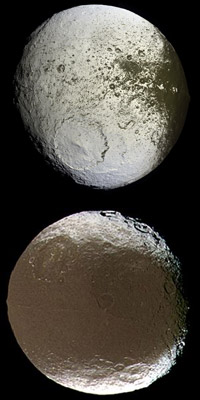These are two pictures of Iapetus. Some parts of the moon's surface are bright white. Other areas are very dark. The Cassini spacecraft took these pictures.
Click on image for full size
Images courtesy of NASA/JPL/Space Science Institute.
Iapetus
Iapetus was discovered by G. Cassini in 1672. Iapetus is the 2nd farthest moon from Saturn. Iapetus is one of the
icy moons of Saturn. Iapetus is about as wide as California is long.
Iapetus is very much like Rhea, Enceladus, Dione, and Tethys except that it looks completely different. It looks half dark and half bright.
You might also be interested in:
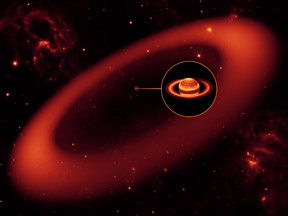
The Phoebe Ring is one of the rings around the planet Saturn. The Phoebe Ring is much bigger than Saturn's other rings. It is about 100 times larger than the main ring system. The ring was discovered by
...more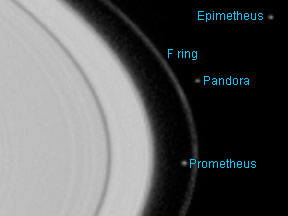
Prometheus is a small moon of Saturn. It was discovered by S. Collins and others in 1980 from photos taken by the Voyager 1 spacecraft. This moon's name comes from Greek mythology. Prometheus was a Titan
...more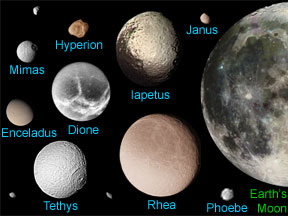
Saturn has // Call the moon count function defined in the document head print_moon_count('saturn'); moons. Many of those are tiny chunks of rock or ice only a few kilometers (miles) across. One of Saturn's
...more
Saturn has // Call the moon count function defined in the document head print_moon_count('saturn'); moons. Many of those are tiny chunks of rock or ice only a few kilometers (miles) across. One of Saturn's
...more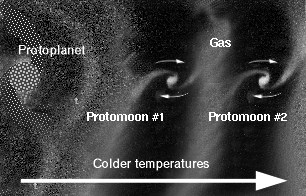
Titan is like other icy moons. Scientists want to know "how come Titan is the only one that has a big atmosphere?" Titan formed the same way other planets did, as shown in this picture. Where Titan formed,
...more
The air of Titan is a lot like the Earth's, except that it is very cold, from -330 degrees to -290 degrees! Like the Earth, there is a lot of Nitrogen and other complex molecules. There also may be an
...more
Pandora is a small moon of Saturn. It was discovered by S. Collins and others in 1980 from photos taken by the Voyager 1 spacecraft. Pandora's name comes from Greek mythology. Pandora was the first woman,
...more


